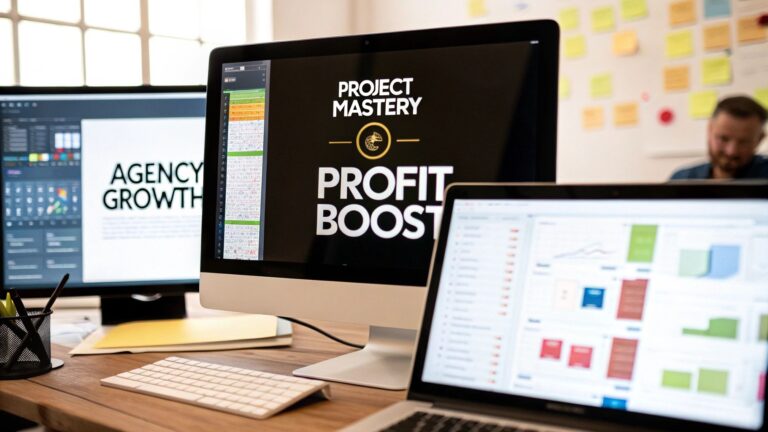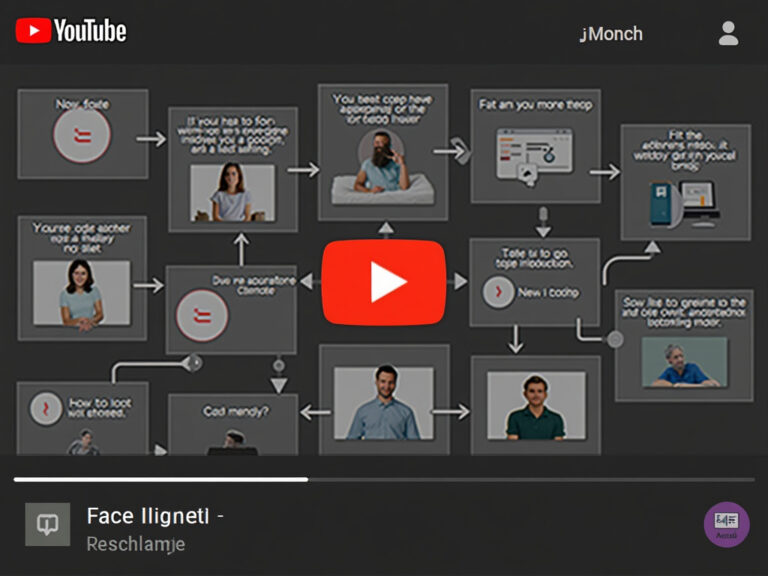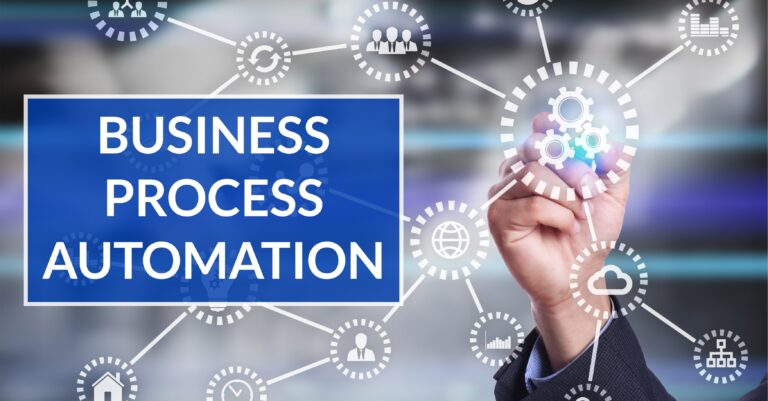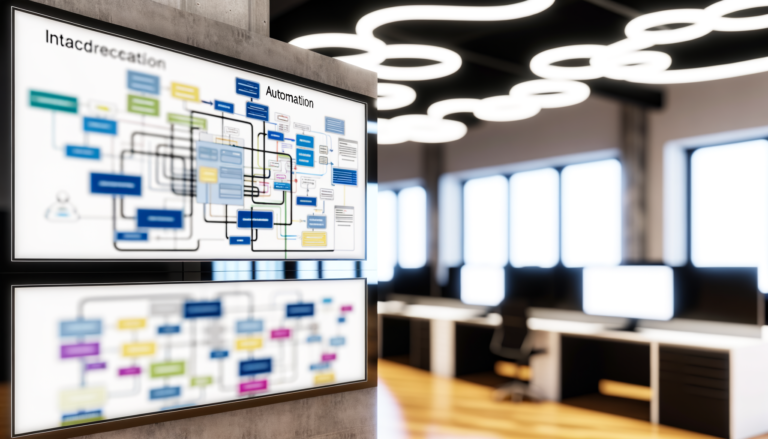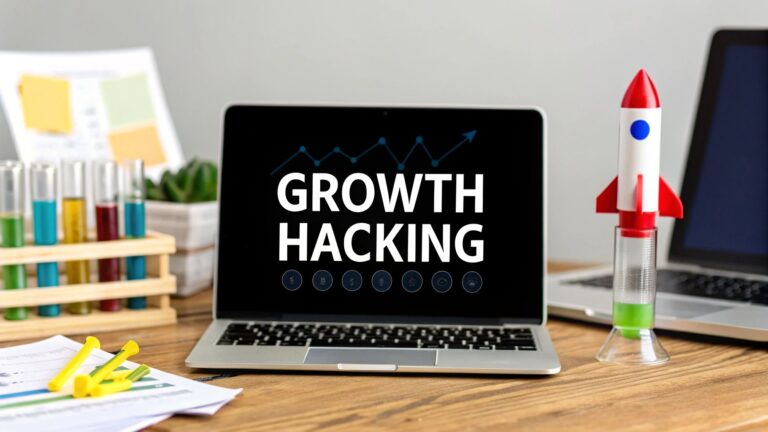Top Performance Management Best Practices for SaaS Teams
In the fast-paced world of B2B and SaaS, the traditional annual performance review is becoming obsolete. High-growth teams require agility, continuous improvement, and a culture of transparent feedback, not a once-a-year conversation about past events. Effective performance management has evolved from a rigid HR process into a dynamic, strategic tool that directly fuels growth, engagement, and innovation. This shift is critical for retaining top talent and hitting ambitious revenue targets in a competitive market.
A modern approach to performance management isn't just an HR function; it's a core operational strategy. It ensures that every team member, from sales development representatives to software engineers, is aligned with key business objectives and empowered to contribute effectively. Without a robust system, misaligned goals, low engagement, and preventable turnover can quietly erode a company's potential for scalable growth. Implementing a set of well-defined performance management best practices is the most direct way to build a resilient, high-output organization.
This article breaks down nine essential strategies, offering actionable frameworks and real-world examples specifically tailored for the unique challenges of SaaS and B2B environments. You will learn how to move beyond outdated review cycles and cultivate a culture of continuous improvement.
We will cover essential topics including:
- Continuous Performance Management: Shifting from annual reviews to ongoing dialogue.
- 360-Degree Feedback: Gathering holistic insights from peers, managers, and direct reports.
- Real-Time Performance Tracking: Using data and analytics to inform coaching and decision-making.
- Development-Focused Conversations: Framing feedback around growth and skill enhancement.
From setting smarter goals to leveraging modern analytics, these practices will help you build a high-performance culture that drives results and scales with your business.
1. Continuous Performance Management
Continuous Performance Management is a dynamic, modern approach that swaps the rigid, once-a-year review for a system of ongoing dialogue, real-time feedback, and frequent check-ins. Instead of saving performance discussions for a formal, high-pressure meeting, this model integrates them into the regular workflow, allowing managers and employees to address challenges, celebrate wins, and adjust goals in real time. This shift from a retrospective annual event to a forward-looking, continuous conversation makes performance management a tool for development rather than just an evaluation.
This methodology is one of the most impactful performance management best practices because it fosters a culture of open communication and agility. Companies like Adobe famously pioneered this shift in 2012, replacing their annual review process with frequent check-ins and feedback sessions. The result was a remarkable 30% reduction in voluntary turnover, as employees felt more supported and engaged. Similarly, GE moved away from its controversial stack-ranking system to a model centered on continuous coaching and goal alignment, leading to higher employee morale and productivity.

How to Implement Continuous Performance Management
Successfully adopting this model requires a structured yet flexible approach. It is not just about having more meetings; it is about having more meaningful conversations.
Here are actionable steps for implementation:
- Train Your Managers: Equip managers with the skills to deliver constructive, empathetic, and actionable feedback. Training should cover active listening, coaching techniques, and how to structure a productive check-in.
- Leverage Technology: Use performance management software to schedule, track, and document check-ins. These platforms can also facilitate goal tracking and 360-degree feedback, creating a central hub for all performance-related data.
- Set Clear Expectations: Define the expected frequency (e.g., weekly or bi-weekly), format, and purpose of check-ins. Provide simple templates or a short list of guiding questions to help managers and employees prepare for these conversations.
- Focus on the Future: Shift the conversation from "what you did wrong" to "how we can grow from here." Use check-ins to discuss career aspirations, skill development, and overcoming upcoming challenges. This forward-looking focus transforms feedback from a critique into a collaborative growth plan.
2. SMART Goal Setting
SMART Goal Setting is a foundational framework for creating clear and trackable objectives. The acronym stands for Specific, Measurable, Achievable, Relevant, and Time-bound. This methodology transforms vague aspirations into actionable targets, ensuring that performance expectations are unambiguous, aligned with company priorities, and grounded in a realistic timeline. It provides a structured, transparent approach to goal creation that empowers both employees and managers.
This framework is a cornerstone of effective performance management best practices because it eliminates confusion and creates a direct line of sight between individual contributions and broader organizational success. For instance, Salesforce utilizes SMART goals in performance planning to give individual contributors clear benchmarks for success. Similarly, Intel's renowned OKR (Objectives and Key Results) system is heavily influenced by SMART principles, ensuring its ambitious quarterly objectives are well-defined and measurable.
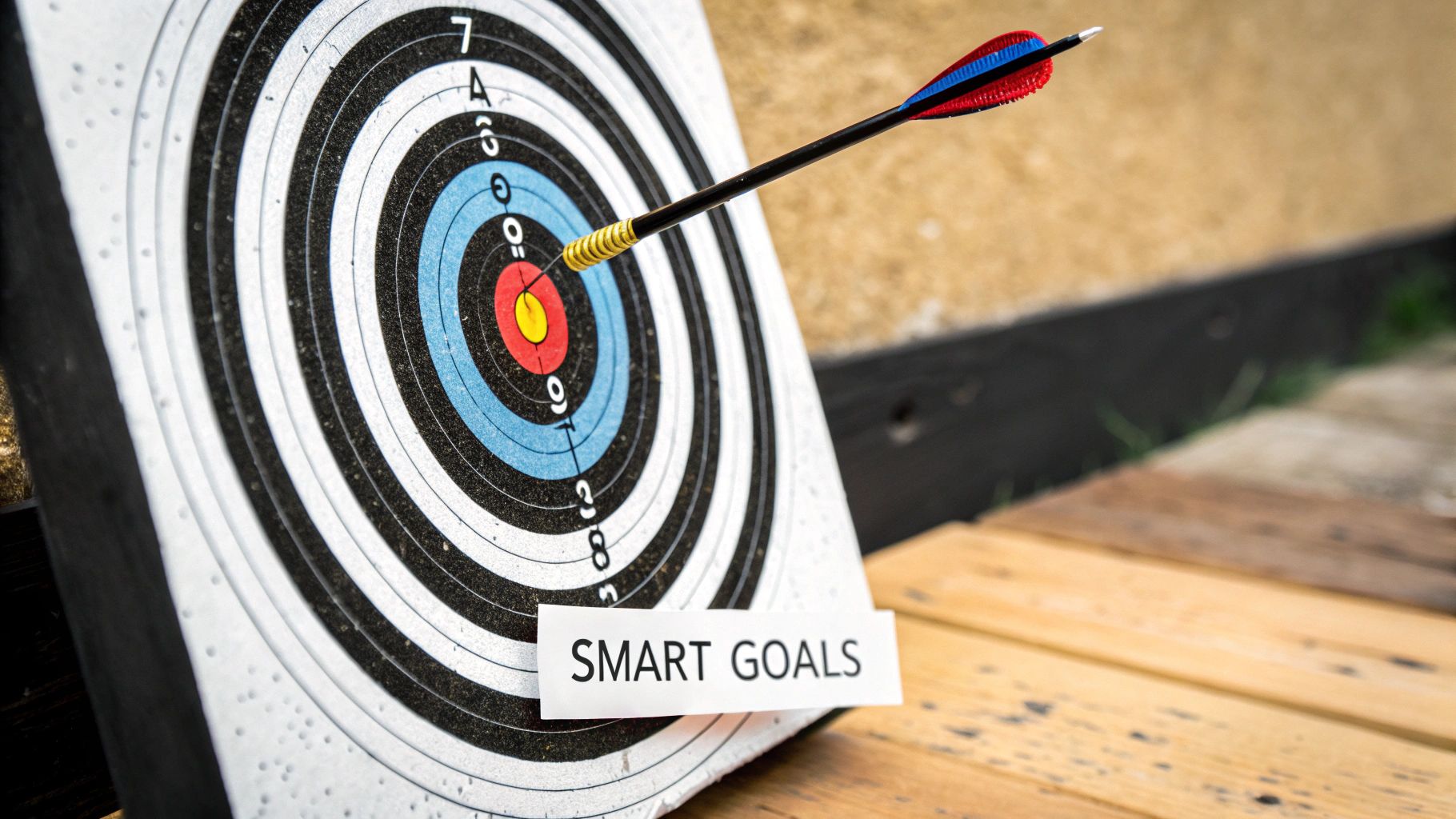
How to Implement SMART Goal Setting
Effective implementation goes beyond simply knowing the acronym; it involves a collaborative process that ensures goals are both ambitious and attainable. It’s about creating a shared understanding of what success looks like.
Here are actionable steps for implementation:
- Collaborate on Goal Creation: Involve employees directly in the goal-setting process. Co-creating objectives ensures greater buy-in and ownership, as employees can provide valuable input on what is truly achievable and relevant to their role.
- Link Individual to Company Goals: Explicitly connect each individual's SMART goals to their team's and the organization's overarching objectives. This helps employees see the impact of their work, boosting motivation and strategic alignment.
- Review and Adjust Regularly: Goals are not static. Set aside time quarterly to review progress, celebrate milestones, and adjust goals as business priorities shift. This agility ensures that goals remain relevant and challenging.
- Document and Track Visibly: Use performance management software or a shared document to record all goals. Making goals easily accessible allows for regular reference during check-ins and helps keep everyone accountable for their commitments.
3. 360-Degree Feedback
360-Degree Feedback is a comprehensive performance assessment method that gathers confidential, anonymous feedback from a full circle of sources around an employee. This includes input from their manager, peers, direct reports, and even external stakeholders like customers, supplemented by a self-evaluation. This multi-perspective approach provides a holistic view of an employee’s skills, behaviors, and impact, moving beyond the traditional top-down review.
This methodology is a cornerstone of modern performance management best practices, particularly for leadership development, because it uncovers blind spots and highlights strengths that a single manager might miss. For instance, Procter & Gamble uses 360-degree feedback to identify and nurture high-potential employees for future leadership roles. Similarly, IBM integrates these assessments into its performance system to foster a culture of well-rounded professional growth and team collaboration.

How to Implement 360-Degree Feedback
A successful 360-degree feedback process is structured, confidential, and focused on development. It is not a tool for performance ratings or compensation decisions but a catalyst for growth.
Here are actionable steps for implementation:
- Use for Development, Not Evaluation: Frame the process as a tool for personal and professional growth. Using 360-degree feedback for salary or promotion decisions can create a culture of fear, leading to less honest and more political responses.
- Ensure Anonymity and Confidentiality: Use a trusted third-party tool or a secure internal system to collect responses. Guaranteeing that feedback is anonymous encourages participants to be candid and constructive, which is essential for obtaining valuable insights.
- Train Participants: Provide clear training for both those giving and receiving feedback. Givers should learn how to provide specific, behavior-based, and actionable comments, while receivers should be coached on how to interpret the results with an open, growth-oriented mindset.
- Focus on Actionable Behaviors: Design the survey questions to assess observable behaviors and competencies tied to the role and company values (e.g., "Effectively communicates project updates to the team"). Avoid questions about personality traits, which are subjective and difficult to act upon.
- Facilitate a Follow-Up Plan: The process does not end when the report is delivered. A manager or coach should help the employee analyze the feedback, identify key themes, and create a tangible development plan with specific goals and next steps.
4. Regular One-on-One Meetings
Regular one-on-one meetings are structured, recurring sessions between a manager and their direct report, dedicated to performance, development, and relationship-building. These private conversations move beyond simple status updates to create a consistent rhythm for coaching, feedback, and career planning. By carving out this dedicated time, organizations transform the manager-employee dynamic from a directive one to a supportive partnership.
This practice is a cornerstone of effective performance management best practices because it builds psychological safety and trust. Google’s famous "Project Oxygen" study identified regular, high-quality one-on-ones as a key behavior of their best managers. Similarly, companies like HubSpot and Atlassian use these meetings as a foundational element of their performance culture, ensuring alignment and continuous employee development. Popularized by management thought leaders like Andy Grove and Ben Horowitz, the one-on-one is a powerful tool to drive both individual and team success.

How to Implement Regular One-on-One Meetings
Effective one-on-ones are a skill that requires intention and structure, not just a recurring calendar invite. They are crucial for maintaining momentum and can significantly increase team productivity.
Here are actionable steps for implementation:
- Let Employees Drive the Agenda: While managers should come prepared, encourage employees to own the agenda. This empowers them to bring their most pressing topics, whether they are roadblocks, career questions, or new ideas.
- Prepare and Review: Both parties should prepare talking points and review notes from the previous session. This ensures continuity and shows that commitments are being taken seriously and followed up on.
- Focus on Development, Not Just Updates: Dedicate a significant portion of the meeting to future-focused topics like skill development, career goals, and growth opportunities, rather than just reviewing past tasks.
- Ask Open-Ended Questions: Managers should guide the conversation by asking powerful, open-ended questions like, "What's on your mind?" or "What can I do to better support you?" to encourage deeper, more meaningful discussion.
- Document and Follow Up: Take brief notes on key discussion points, decisions, and action items. Following up on these commitments builds trust and ensures the meetings lead to tangible outcomes.
5. Competency-Based Performance Assessment
Competency-Based Performance Assessment is a sophisticated evaluation approach that measures an employee's performance against specific competencies, skills, and behaviors essential for success in their role. Instead of focusing solely on "what" was achieved (the outcomes), this method emphasizes "how" it was achieved, providing a holistic view of an employee's capabilities. It connects individual performance directly to the skills and values that drive organizational success, creating a clear roadmap for professional development and talent management.
This methodology is one of the most effective performance management best practices because it provides a structured, objective framework for evaluation, reducing bias and clarifying expectations. Global professional services firm Accenture uses detailed competency models to evaluate consultants on skills ranging from client relationship management to analytical problem-solving, ensuring their workforce is aligned with strategic goals. Similarly, Deloitte’s competency framework is central to its talent management strategy, guiding everything from hiring and promotions to leadership development, ensuring a consistent standard of excellence across the organization.
How to Implement Competency-Based Performance Assessment
Implementing this model requires defining what success looks like in behavioral terms and integrating it into your performance cycle. It’s about creating a common language for performance that everyone understands.
Here are actionable steps for implementation:
- Develop a Competency Framework: Work with subject matter experts and leadership to identify the core competencies (e.g., strategic thinking, communication, innovation) and role-specific skills required. This framework should be the foundation of your assessment process.
- Use Behavioral Anchors: For each competency, define clear proficiency levels with specific, observable behavioral examples. For instance, "Communication" could range from "Clearly articulates ideas" at a basic level to "Inspires action through compelling storytelling" at an advanced level.
- Integrate into Performance Reviews: Incorporate competency ratings into your review forms alongside goal achievement. Train managers to assess both aspects, providing balanced feedback that covers results and behaviors.
- Link to Development Plans: Use the assessment results to identify skill gaps and create targeted individual development plans. This connection makes the evaluation a direct input for employee growth, showing them exactly where to focus their efforts for career progression.
6. Performance Calibration Sessions
Performance Calibration Sessions are structured meetings where managers come together to discuss, review, and standardize employee performance ratings across different teams and departments. The core purpose is to ensure that performance standards are applied consistently and fairly, removing individual manager bias and creating a more objective evaluation process. Instead of operating in silos, managers present the rationale for their ratings, compare assessments, and align on a common definition of what "exceeds expectations" or "meets expectations" truly means.
This methodology is one of the most crucial performance management best practices for scaling organizations because it ensures equity and accuracy. Tech giants like Amazon and Meta (formerly Facebook) have long used calibration sessions to moderate performance ratings, ensuring fairness in compensation and promotion decisions. This process minimizes the risk of lenient or overly critical managers skewing results, which builds employee trust in the performance management system. The goal is to make sure an "A" in one department is equivalent to an "A" in another.
How to Implement Performance Calibration Sessions
Effective calibration isn't about forcing consensus; it's about facilitating an evidence-based discussion to arrive at fair outcomes. A well-run session can dramatically improve the integrity of your entire performance cycle.
Here are actionable steps for implementation:
- Establish Clear Ground Rules: Before the meeting, set expectations for confidentiality, professionalism, and constructive debate. Ensure all participants understand the goal is to standardize ratings, not to criticize other managers' leadership styles.
- Use Data and Evidence: Require managers to come prepared with specific examples, documented achievements, and performance data to support their ratings. Discussions should be grounded in observable behaviors and outcomes, not personality traits or feelings.
- Appoint a Skilled Facilitator: An impartial facilitator (often from HR) should lead the session. Their role is to keep the conversation on track, ensure all voices are heard, challenge potential biases, and guide the group toward consistent application of performance criteria.
- Document and Communicate Outcomes: Record the final, calibrated ratings and the key rationale behind any adjustments. It is important to provide feedback to managers on the outcomes so they can deliver the final review to their employees with confidence and clarity.
7. Development-Focused Performance Conversations
Development-Focused Performance Conversations shift the traditional review from a backward-looking evaluation to a forward-looking dialogue centered on employee growth and potential. This approach prioritizes identifying career aspirations, creating actionable development plans, and providing coaching to help employees build new skills. Instead of just assessing past performance, the conversation becomes a collaborative tool for aligning individual growth with organizational goals, fostering a culture where learning is as important as achieving.
This method is one of the most effective performance management best practices because it directly links performance to personal and professional growth, boosting motivation and retention. Netflix is a prime example, having replaced formal reviews with continuous conversations centered on talent development and skill-building. Similarly, LinkedIn embeds career development discussions into its performance framework, ensuring managers and employees regularly discuss future goals and opportunities. This focus on potential, inspired by thought leaders like Carol Dweck and her "Growth Mindset" research, transforms managers from judges into coaches.
How to Implement Development-Focused Performance Conversations
Adopting this model means fundamentally changing the purpose of performance discussions. The goal is to build capabilities, not just to rate contributions.
Here are actionable steps for implementation:
- Ask Future-Oriented Questions: Train managers to move beyond "What did you accomplish?" and ask questions like, "What skills do you want to build next?" or "What kind of projects would challenge you?" These questions open the door to meaningful development planning.
- Map Strengths to Opportunities: Instead of focusing on weaknesses, identify an employee's core strengths and find opportunities to leverage them. As Marcus Buckingham advocates, building on what people do best is the fastest path to excellence and engagement.
- Create Individual Development Plans (IDPs): Co-create a simple, actionable plan that outlines specific learning goals, stretch assignments, and mentoring opportunities. This document should be a living guide, reviewed and updated in regular check-ins.
- Provide Resources and Support: Connect employees with mentors, online courses, workshops, and other learning resources. The manager’s role is to facilitate access to these tools, removing barriers to growth and demonstrating the company's investment in its people. These conversations are a key part of wider business process improvement. To see how this fits into a larger strategy, you can explore various business process improvement methods on makeautomation.co.
8. Real-Time Performance Tracking and Analytics
Real-Time Performance Tracking and Analytics involves leveraging technology and data to continuously monitor, measure, and analyze employee performance. This approach moves beyond subjective observations by using performance management software, productivity metrics, and business intelligence tools to generate ongoing, data-driven insights. It provides a live, transparent view of individual and team performance, allowing for immediate course correction and proactive support.
This data-centric methodology is one of the most critical performance management best practices for modern organizations seeking a competitive edge. It turns performance management from a qualitative exercise into a quantifiable science. For instance, Salesforce utilizes its own Einstein Analytics to give sales leaders real-time insights into team performance against quotas, while Microsoft's Workplace Analytics helps identify collaboration patterns and productivity trends. These tools empower managers to make informed decisions based on objective data rather than gut feelings.
How to Implement Real-Time Performance Tracking and Analytics
Successfully implementing this practice is about turning raw data into actionable insights that drive growth and development. It requires a strategic and transparent approach to data collection and analysis.
Here are actionable steps for implementation:
- Define Meaningful Metrics: Identify the metrics that truly matter. To effectively track performance, understanding how to define and utilize Key Performance Indicators for Employees is essential. These should align directly with business goals and role responsibilities, balancing quantitative outputs with qualitative assessments.
- Choose the Right Technology: Invest in performance management platforms like Workday, BambooHR, or business intelligence tools like Tableau. The right software will integrate with your existing workflows to automate data collection and provide intuitive dashboards for easy analysis. You can learn more about how to measure business growth with the right analytics.
- Train Managers on Data Literacy: Equip your leaders with the skills to interpret analytics correctly. Training should focus on how to read dashboards, identify trends, and use the insights to have constructive, evidence-based conversations with their teams.
- Maintain Transparency: Be open with employees about what data is being collected and how it will be used. Frame analytics as a tool for development and support, not for surveillance. This transparency builds trust and encourages buy-in.
9. Recognition and Rewards Integration
Recognition and Rewards Integration is a systematic approach that connects employee acknowledgment directly to performance outcomes, goal achievement, and desired behaviors. Instead of treating recognition as a separate, ad-hoc activity, this practice weaves it into the fabric of the performance management cycle. It ensures that when employees exceed expectations or embody company values, their contributions are consistently and meaningfully celebrated through both formal rewards and informal praise, creating a powerful reinforcement loop.
This strategy is one of the most vital performance management best practices because it directly motivates employees by showing them that their hard work is seen and valued. Online retailer Zappos famously built its culture around peer-to-peer recognition, where employees can award small bonuses to colleagues who go above and beyond, directly linking positive behaviors to tangible rewards. Similarly, Salesforce's "Ohana" culture includes recognition programs tied to performance metrics and living company values, which reinforces a high-performance, collaborative environment.
How to Implement Recognition and Rewards Integration
Effective integration requires a clear, fair, and consistent system. The goal is to make recognition a natural consequence of great performance, not a rare surprise.
Here are actionable steps for implementation:
- Make Recognition Timely and Specific: Acknowledge achievements as close to when they happen as possible. Instead of a generic "good job," say, "Thank you for staying late to fix that critical bug; your dedication saved the product launch." Specificity reinforces the exact behaviors you want to see repeated.
- Diversify Recognition Methods: Acknowledge that employees have different preferences. Combine public praise, private feedback, monetary bonuses, extra paid time off, and experiential rewards. Platforms like Bonusly and Achievers can help manage a varied rewards program.
- Align Criteria with Company Values: Ensure the behaviors being rewarded are explicitly linked to your organization's core values and strategic goals. This alignment transforms recognition from a simple "thank you" into a powerful tool for cultural reinforcement.
- Train Managers on Effective Recognition: Many managers are uncomfortable giving praise or do it ineffectively. Provide training on how to deliver recognition in a way that feels authentic and impactful, ensuring it's distributed equitably across their teams.
Performance Management Best Practices Comparison
| Item | Implementation Complexity | Resource Requirements | Expected Outcomes | Ideal Use Cases | Key Advantages |
|---|---|---|---|---|---|
| Continuous Performance Management | Moderate to High | Significant manager time, technology platforms | Higher engagement, real-time feedback, better alignment | Organizations seeking ongoing feedback and coaching | Immediate issue correction, improved engagement |
| SMART Goal Setting | Low to Moderate | Time to develop clear goals | Clear, measurable objectives, enhanced focus | Goal-setting, performance tracking | Eliminates ambiguity, improves accountability |
| 360-Degree Feedback | High | Time-intensive, multiple feedback sources | Holistic performance view, increased self-awareness | Leadership development, comprehensive evaluations | Balanced perspective, identifies blind spots |
| Regular One-on-One Meetings | Moderate | Manager time, consistent scheduling | Improved relationships, timely feedback | Any team wanting strong manager-employee communication | Builds trust, early issue identification |
| Competency-Based Performance Assessment | High | Time for framework development, extensive training | Clear expectations, targeted skill development | Roles requiring specific skill measurement | Fair evaluations, career pathing support |
| Performance Calibration Sessions | High | Coordination among managers, meeting time | Consistent ratings, reduced bias | Large organizations with multiple managers | Ensures fairness, improves evaluation quality |
| Development-Focused Performance Conversations | Moderate to High | Coaching skills, time investment | Higher motivation, growth-oriented culture | Employee growth, retention strategies | Strengthens relationships, supports retention |
| Real-Time Performance Tracking and Analytics | High | Technology investment, data management | Data-driven insights, quick trend identification | Data-savvy organizations seeking objective metrics | Objective insights, reduces admin burden |
| Recognition and Rewards Integration | Moderate | Budget for rewards, program management | Increased motivation, positive culture | Performance-driven cultures | Reinforces behaviors, boosts engagement |
From Practice to Performance: Automating Your Path to Excellence
The journey to building a high-performance culture is not a single leap but a series of deliberate, interconnected steps. We've explored a comprehensive set of performance management best practices, moving far beyond the outdated annual review. From establishing a rhythm of continuous feedback and regular one-on-ones to implementing objective 360-degree reviews and data-driven performance calibration, each practice serves as a critical pillar supporting employee growth and organizational success.
The true power of this modern approach lies in its integration. SMART goals give direction, real-time analytics provide clarity, and development-focused conversations build trust. When these elements work in harmony, performance management transforms from a dreaded administrative task into a strategic driver of engagement, retention, and innovation. It becomes the engine that translates individual potential into collective achievement.
Key Takeaways for Immediate Action
To transition from theory to tangible results, concentrate on these core principles:
- Shift from Event to Process: Performance management is not a once-a-year event. It's an ongoing, dynamic conversation woven into your daily operations through continuous feedback loops and consistent check-ins.
- Embrace Data, But Prioritize People: While real-time tracking and analytics are invaluable, their ultimate purpose is to inform and enrich human-centric conversations. Use data to identify trends and opportunities, not to replace meaningful dialogue.
- Consistency is Your Superpower: The effectiveness of these practices hinges on consistent application across all teams. Whether it's the structure of one-on-ones or the criteria for competency assessments, standardized processes ensure fairness and clarity.
The Automation Imperative in Modern Performance Management
Implementing these best practices consistently can introduce significant administrative overhead. Scheduling dozens of one-on-ones, aggregating 360-degree feedback, and manually tracking goal progress can quickly overwhelm even the most dedicated managers. This is where automation becomes a strategic imperative, not just a convenience.
By leveraging automation, you can offload the repetitive, low-value tasks that bog down your performance cycle. Imagine a system where one-on-one meetings are automatically scheduled with prepopulated agendas, or where feedback data from various platforms is centralized into a single dashboard for analysis. This frees up managers to focus their energy where it matters most: coaching, mentoring, and strategic development conversations. For many teams, initial automation efforts begin with their most-used tools. Learning the fundamentals of how to automate Excel can provide a powerful starting point for creating custom performance dashboards and tracking systems before investing in more complex, dedicated software.
Your Next Steps to Building a High-Performance Culture
Mastering these concepts is more than an HR initiative; it's a fundamental business strategy. A well-executed performance management system directly impacts your ability to attract and retain top talent, align teams with core business objectives, and adapt quickly in a competitive market. It creates an environment where employees feel seen, valued, and empowered to do their best work.
Start small but think big. Choose one or two practices from this list to implement or refine this quarter. Perhaps you'll focus on structuring more effective one-on-ones or launching your first 360-degree feedback cycle. As you build momentum, you'll create a powerful, self-reinforcing cycle of growth and excellence that will propel your organization forward. The path to a thriving, high-performance culture is built one best practice at a time.
Ready to move beyond manual processes and build a truly scalable performance management system? At MakeAutomation, we specialize in designing and implementing custom AI and automation workflows that streamline your HR processes, integrate your tools, and empower your managers to focus on what they do best: leading people. Book a free consultation today to discover how we can help you turn performance management best practices into your greatest competitive advantage.


